Historic guideboard on Shutesbury town common packed up for repairs
|
Published: 02-03-2024 10:22 AM
Modified: 02-05-2024 12:47 PM |
SHUTESBURY — An historic guideboard on the town common since 1837, helping travelers to navigate to Massachusetts communities both near and far, is temporarily absent from the green as a restoration project begins.
Last Tuesday morning, the wooden guideboard was wrapped in plastic and loaded onto a truck by five volunteers so it could be transported to the Williamstown Art Conservation Center, to begin a $17,312 project that will include paint analysis and stabilization.
Historical Commission member Matteo Pangallo, who chairs the Community Preservation Committee and joined volunteers Daniel Lass, Paul Lyons, Clif Read and Al Werner in preparing the guideboard for its journey, elaborated on the project to the Selectboard last week.
Pangallo said the guideboard is being put into a sealed environment for one to two months, in a condition of anoxia to kill any insects that may be present, and to stabilize the wood until all excess moisture is released.
Then, once stabilized, the conservators will determine the best approach for its long-term protection, a treatment schedule and a date by which the guideboard will return.
Conservators, he said, want to undertake a closer inspection of the object, including evaluating the age and condition of the paint and wood. The first stage of the rehabilitation treatment will either consolidate or replicate the current paint layers with lettering, and could compensate for small losses and other structural deficiencies. An angled molding will also be applied to the top edge of the skirting molding, a method for shedding water.
Since $10,000 was appropriated from the Community Preservation Act account in spring 2022, town officials had been seeking to identify the best approach for caring for the guideboard that has been a constant presence for travelers at the corner of Wendell, Cooleyville and Leverett roads. The guideboard points to various cities and towns, including Boston, 75 miles to the east, Keene, New Hampshire, 40 miles to the north, and Prescott, just 6 miles to the east, but now one of the communities that lies below the Quabbin Reservoir.
Other money for the project comes from the Historical Commission and Friends of the Shutesbury Historical Commission.
Article continues after...
Yesterday's Most Read Articles
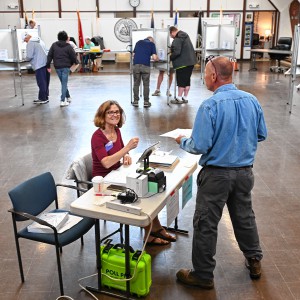 Political newcomer defeats Shores Ness for Deerfield Selectboard seat
Political newcomer defeats Shores Ness for Deerfield Selectboard seat
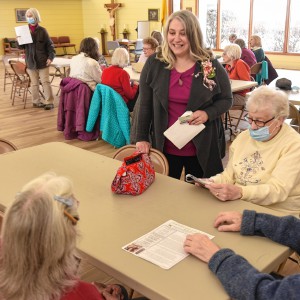 South County Senior Center opts not to renew church lease after rift over LGBTQ program
South County Senior Center opts not to renew church lease after rift over LGBTQ program
 More than 130 arrested at pro-Palestinian protest at UMass
More than 130 arrested at pro-Palestinian protest at UMass
 As I See It: Between Israel and Palestine: Which side should we be on, and why?
As I See It: Between Israel and Palestine: Which side should we be on, and why?
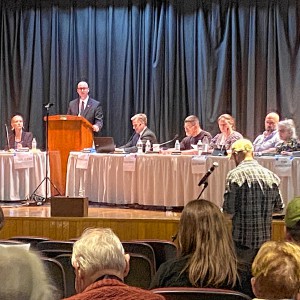 Moratoriums on large-scale solar, battery storage passed in Northfield
Moratoriums on large-scale solar, battery storage passed in Northfield
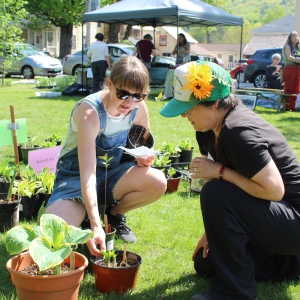 Bridge of Flowers in Shelburne Falls to open on plant sale day, May 11
Bridge of Flowers in Shelburne Falls to open on plant sale day, May 11
Pangallo said the guideboard will also be evaluated for the possibility of returning the cupola-like structure to its original form. The design of the new top, and choice of a new roofing material, will be decided by the Selectboard in consultation with the Historical Commission, and the conservators will then develop a proposal for the second phase of restoration.
The Historical Commission continues to explore whether a structure should protect it, such as a pergola, which a resident has offered to build once materials are purchased.
“When the guideboard is finally returned to the town common, it will be protected from further damage by moving it back slightly from the road, setting it up on a stone or concrete base, and building a gazebo-like structure over it,” Pangallo said. “The design of the gazebo will be in keeping with the architectural style of the historic buildings around the common.”
The guideboard was first placed on the town common by Lorin Briggs, a cooper and town resident, according to records held by the Massachusetts Historical Commission. It was previously refurbished in 2009 by residents Bob Groves and Jim Aaron.
The application made for CPA money two years ago describes the guideboard as “a tangible and much-loved historical structure” that has included the occasional addition of the satiric and mythical Ripton, a make-believe Massachusetts town that made its way through the Legislature and was signed into law by then Gov. Michael Dukakis in 1984.

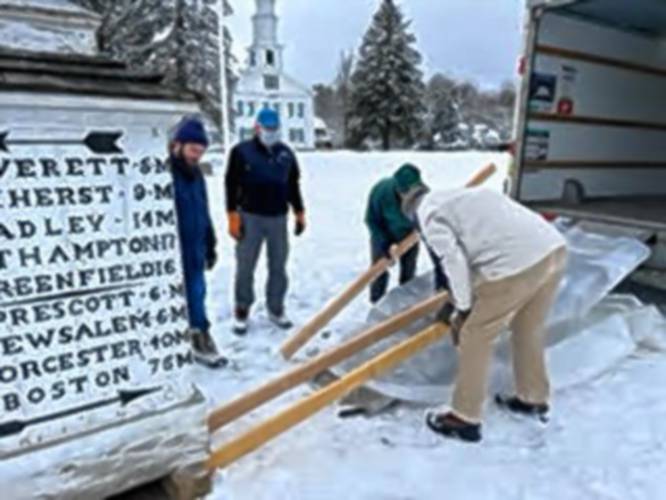
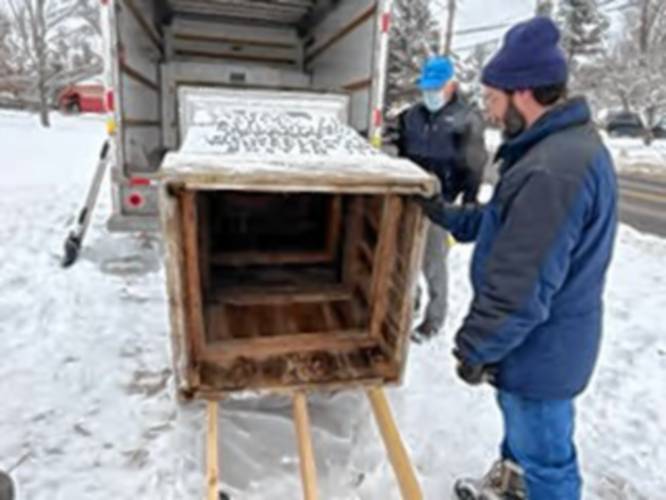

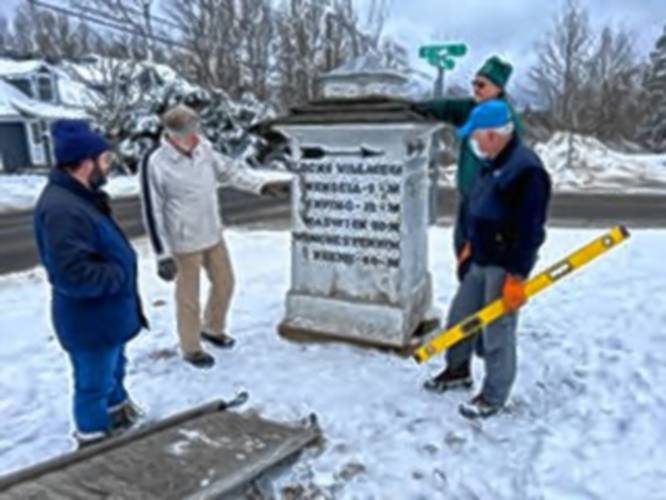
 No surprises in Wendell election
No surprises in Wendell election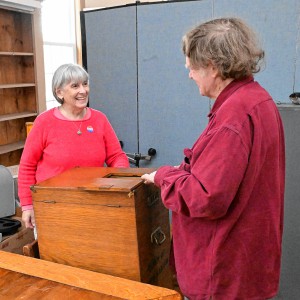 New Salem election ushers in new Selectboard member
New Salem election ushers in new Selectboard member
